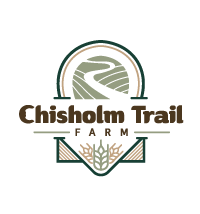This week and in the following weeks, we want to introduce to you our Stone Mill Series. We will be sharing what stone milling is, why we believe it is better, and how you can master this art at home! So many times we hear what is the difference between stone milled flour versus roller mill flour? We want to be able to bring to you the answer, but this week we want to concentrate on what is stone milling.
Being from Minnesota, our farm loves that our state, namely Anthony Falls, has played a massive part in producing flour throughout the years. In today's flour production roller mills are used in order to produce flour in mass quantities but in the beginning stone mills were used. In 1900, there were 25,000 stone mills. It is likely that every community had one. In our area it was Faith Flour Mill, which with much sadness lightning burnt down in 1989. One hundred years later 25,000 local mills were replaced by a handful of commercial flour companies. At our farm, we pride ourselves on being rooted in history and now we want to take a piece of rooted history and bring it to the present.
Stone milled flour is a type of flour that is produced by grinding grains between two large stones. This traditional method of milling has several distinct characteristics and benefits:
-
Texture and Consistency: Stone milling grinds the entire grain, including the bran and germ, resulting in a coarser texture and more varied particle size compared to modern roller-milled flour.
-
Nutritional Content: Because stone milling retains more of the bran and germ, the resulting flour is richer in fiber, vitamins, and minerals.
-
Flavor: Stone milled flour often has a more robust and complex flavor due to the retention of the whole grain components.
-
Heat Generation: Stone milling generates less heat than roller milling, which helps to preserve the nutritional integrity and flavor of the grains.
-
Traditional Method: This method has been used for centuries and is valued for its ability to produce flour that retains more of the grain's natural properties.
Today, we will bring to you the importance of texture and consistency when milling flour. Texture is necessary to learn about because fresh milled flour doesn't look and feel like store bought flour. First, it has, what I describe as a grainier feel but to us that is a fantastic feel and it isn't a hard grainier but a softer grainier feel, if that makes sense. Second, it does not have a white look but has more of what we refer to as a natural look. We would call that a cream color with flakes of tan. Now that we are hopefully on the same page, let's take a closer look at the characteristics of texture and consistency:
Texture:
- Coarser Grain: Stone milling produces flour with a coarser texture compared to modern roller milling. This is because the process crushes the whole grain, including the bran, germ, and endosperm, resulting in larger and more varied particle sizes.
- Presence of Bran and Germ: The inclusion of the bran and germ contributes to a grittier texture. These components are typically sifted out in roller milling but are integral to stone milled flour, providing a more rustic feel.
Consistency:
- Variable Particle Size: Stone milled flour often has an uneven consistency with a mix of fine and coarse particles. This variability is due to the nature of the stone grinding process, which doesn’t produce uniform particles like roller milling does.
- Whole Grain Integrity: The entire grain is used in stone milling, meaning the flour contains all parts of the grain in their natural proportions. This leads to a consistency that can vary from batch to batch depending on the specific grain and milling conditions.
- Moisture Retention: Stone milled flour tends to retain more moisture, which can affect the consistency and baking properties. It might feel slightly damp or heavier compared to roller-milled flour.
In summary, the texture and consistency of stone milled flour are defined by its coarser grain, variability in particle size, and the inclusion of the whole grain. These attributes contribute to a distinctive baking experience, both in terms of handling the dough and the flavor and texture of the finished products.

1 comment
I loved reading about your business recently in the NW Minnesota Foundation spring edition of the Resource.
I like using heirloom organic grains & flours in baking & cooking. I’m looking forward to buying buckwheat flour when your mill is up & running.
I’m grateful to know of farmers like you & your family who put high value on producing ancient grains.